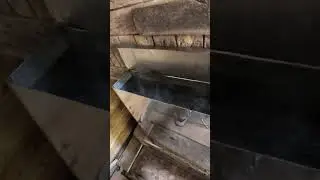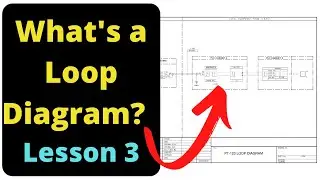What is a Transmitter -Instrumentation Technician Course - Lesson 2
In this video of the Instrumentation Technician Course we are going to look into what a transmitter is, how process variables are used in industry and how they are detected by transmitters. I'll then talk about how transmitters signals are used in PLC and control systems.
In the previous video:
▶▶Lesson 1 link: • Process control loop Basics - Instrum...
We introduced you to process control loops and process variables in industry.
These process variables are used in industry in a few distinct ways.
They can be used for process control – Just like our home heating example some process variables are used an input to a process control loop to maintain a desired setpoint.
They are used as initiators for shutdown systems – these systems will shut down the plant if there are unsafe conditions, A typical example would be an input to a HIPPS or high integrity pressure protection system that protects pipework or vessels from becoming over pressured past there safe design limit.
They can be displayed to operators of the plant, This is often to a control room operator who will see a visual representation of the plant through a HMI (Human machine interface) that displays live plant information and generates alarms to inform the operator there is a condition that an operator must respond to. Process variables can also be displayed to an operator through local indicators such as pressure gauges or annunciator panels.
This brings us onto the question of how we detect these process variables? Devices called transmitters do this job. They are devices that are designed to detect the various process conditions and turn them into a signal our process control system can understand.
Transmitters are at the core of what Instrumentation is about, engineered devices that process and transmit information or signals from one protocol or format to another. Transmitters usually send their signal to a PLC or local controller in a format they will be able to understand and interpret.
Because industry has been evolving and changing for many, many years you are likely to find a wide range of different signal types that Transmitters output, this will be dependent on the age of the site the equipment is installed in.
Lets talk about some of the common signal types that transmitters convert their detected process variables into.
Raw electrical signals – For electrically powered transmitters they work by manipulating an output voltage or current.
The most common form of raw electrical signals are.
0-10v
1-5V
4-20mA – This is the most common form of signal you will find even in modern equipment.
As well as raw signals, data can be transferred using multiple different COMMS signal standards. Common signal standards you will find are:
RS232
RS422
RS485
TCP/IP
▶▶Check out brilliant T-shirts / Merch at my store:
https://www.redbubble.com/people/rudd...
▶▶Check out my website for more articles on Instrumentation:
https://www.instrumentationcontrol.in...
▶▶Need a multimeter for testing Instrumentation? Check out the Amazon link to Fluke 117: https://amzn.to/3lNDb1j
▶▶ / instrumentationcontrol
![Kokomi and Kujou Sara 2.1 trailer cutscene [Genshin Impact]](https://images.videosashka.com/watch/_wwHJFdZtWI)








![PLC Basics for Beginners - [Part 1]](https://images.videosashka.com/watch/c4VrA0kx5zc)
![Instrumentation Calibration - [An Introduction]](https://images.videosashka.com/watch/SamV6zpRNgg)


![What Is OHM'S Law ? [Explained in Under 5 Minutes]](https://images.videosashka.com/watch/uZ-m91IEkjQ)
![Pressure Transmitter Workshop Re-range - [HART 475 / Fluke 789 / Druck DPI610 / Foxborough TX]](https://images.videosashka.com/watch/L7T92J7wpzE)

![PLC Basics for Beginners Part 2 - [ PLC Architecture ]](https://images.videosashka.com/watch/p-p2IjxGelQ)

![Digital Input Card - PLC Basics for Beginners - [Part 3]](https://images.videosashka.com/watch/qPEBjqW9cE8)
